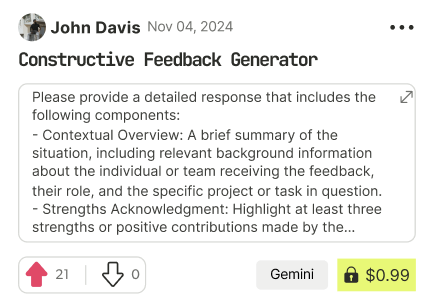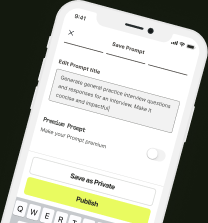Approaching a Difficult Conversation: Strategies for Effective Communication
Context: Approaching a difficult conversation with a colleague or superior can be challenging, but with the right strategy, you can navigate the discussion effectively and constructively. For this example, let's replace [specific issue] with "underperformance on team projects" and [person's role] with "team lead."
Pre-Conversation Preparation:
1. Define the issue: Clearly articulate the specific problem or issue you want to address, focusing on behaviors or actions rather than personal traits.
2. Gather evidence: Collect relevant data, examples, or feedback that support your concerns.
3. Set goals: Determine what you hope to achieve from the conversation, such as improved performance or a plan for growth.
4. Choose the right time and place: Schedule a private meeting when both parties are available and relatively free from distractions.
Key Points to Address:
1. Specific behaviors or actions: Describe the specific behaviors or actions that are causing concerns, using "I" statements to express your thoughts and avoid blame.
2. Impact on the team or organization: Explain how the issue affects the team or organization, highlighting any consequences or missed opportunities.
3. Expected improvements: Clearly state what you expect from the team lead in terms of improvement, providing specific examples or metrics.
4. Support and resources: Offer support and resources to help the team lead address the issue, such as training or mentorship.
Potential Responses from the Team Lead:
1. Defensiveness: The team lead may become defensive, denying or justifying their actions. Listen actively and acknowledge their perspective, while reiterating the impact of their behavior.
2. Acknowledgment: The team lead may acknowledge the issue and express a willingness to improve. Encourage them to share their plan for improvement and offer support.
3. Lack of understanding: The team lead may not fully understand the issue or its impact. Provide additional examples or data to clarify the situation.
Maintaining a Constructive Dialogue:
1. Active listening: Listen attentively to the team lead's response, asking clarifying questions to ensure understanding.
2. Empathy and respect: Maintain a respectful tone and show empathy towards the team lead's perspective, even if you disagree.
3. Focus on solutions: Collaborate to find solutions, rather than dwelling on the problem. Encourage the team lead to take ownership of their improvement plan.
4. Follow-up: Schedule a follow-up meeting to review progress and provide ongoing support.
Post-Conversation Next Steps:
1. Document the discussion: Summarize the conversation, including agreements and action items.
2. Monitor progress: Regularly check-in with the team lead to monitor their progress and provide feedback.
3. Adjust the approach: If necessary, adjust your approach based on the team lead's response and progress.
By following this strategy, you can approach a difficult conversation with your team lead in a constructive and effective manner, ultimately leading to improved performance and a stronger working relationship.

Find Powerful AI Prompts
Discover, create, and customize prompts with different models, from ChatGPT to Gemini in seconds

Simple Yet Powerful
Start with an idea and use expert prompts to bring your vision to life!
